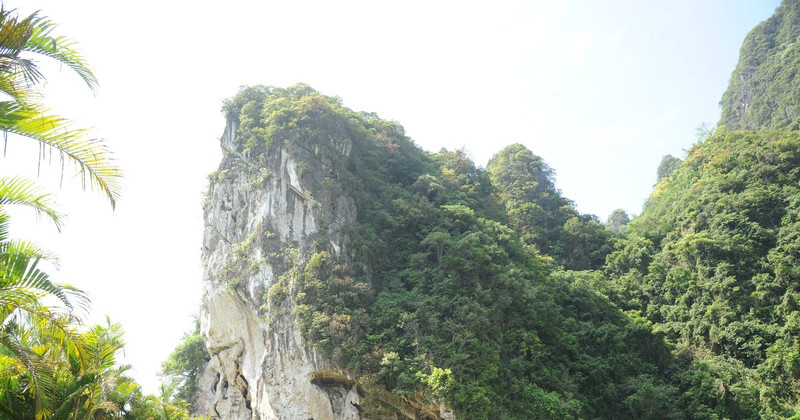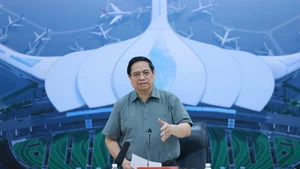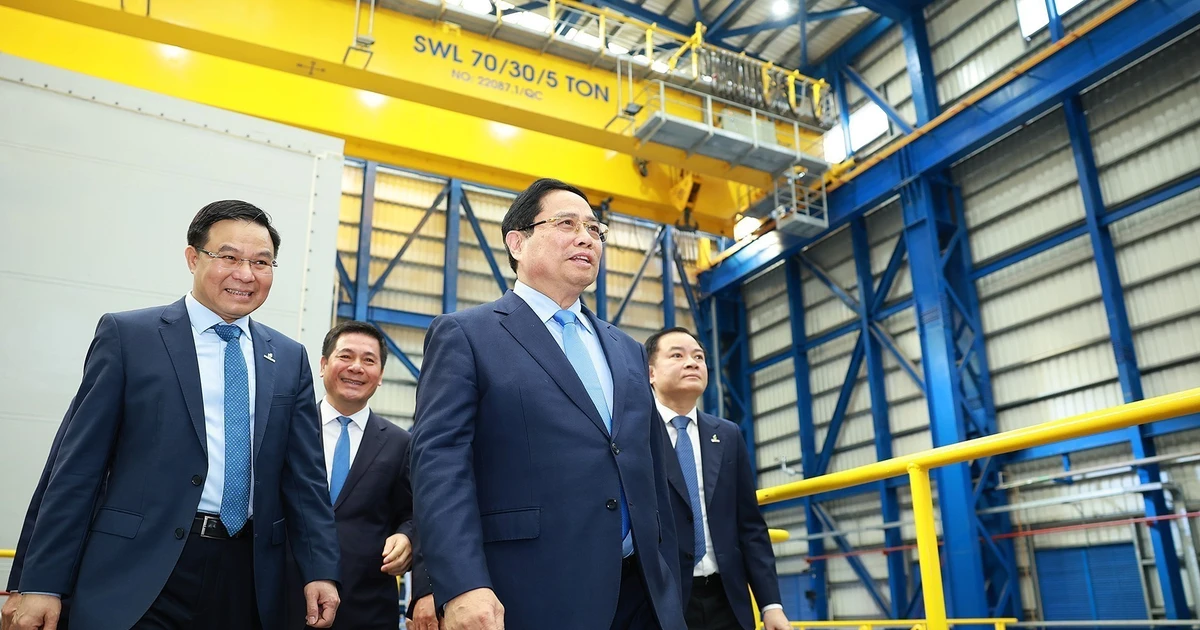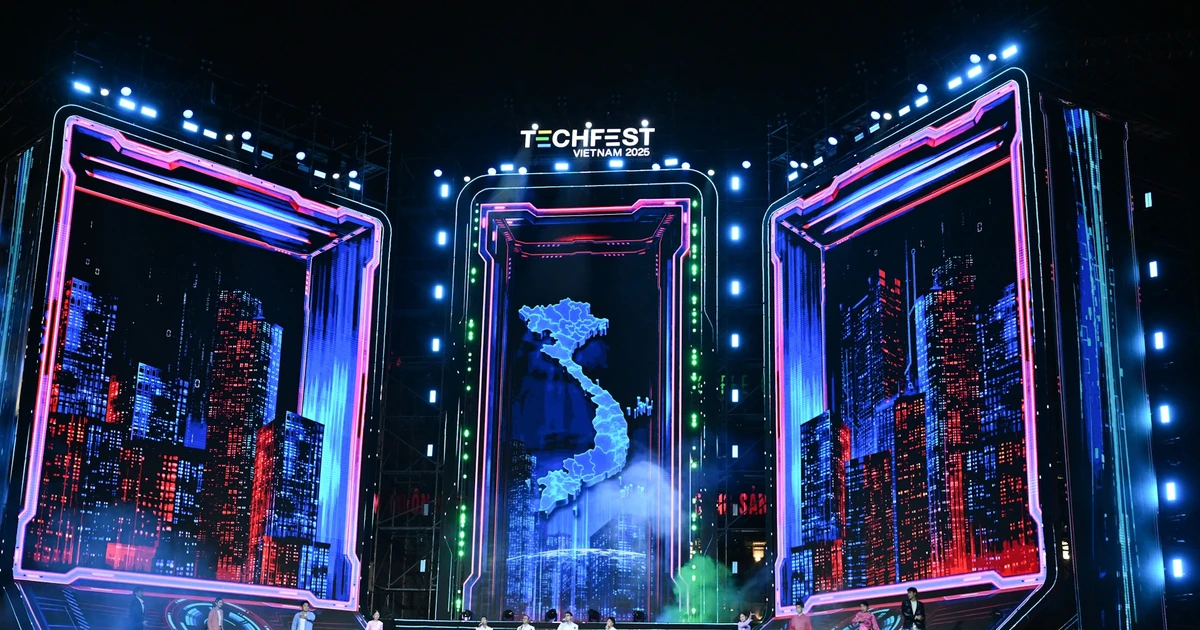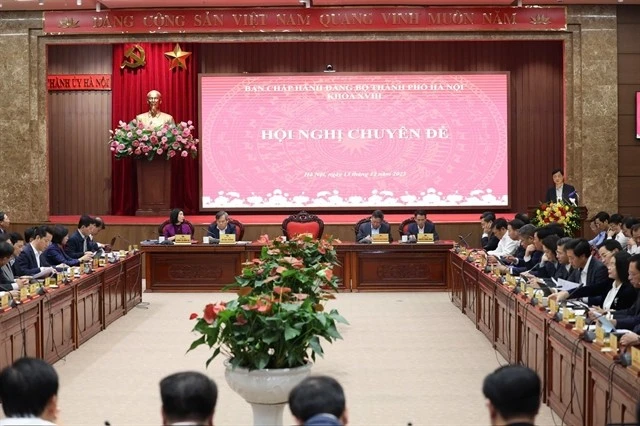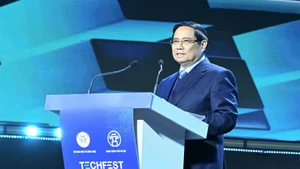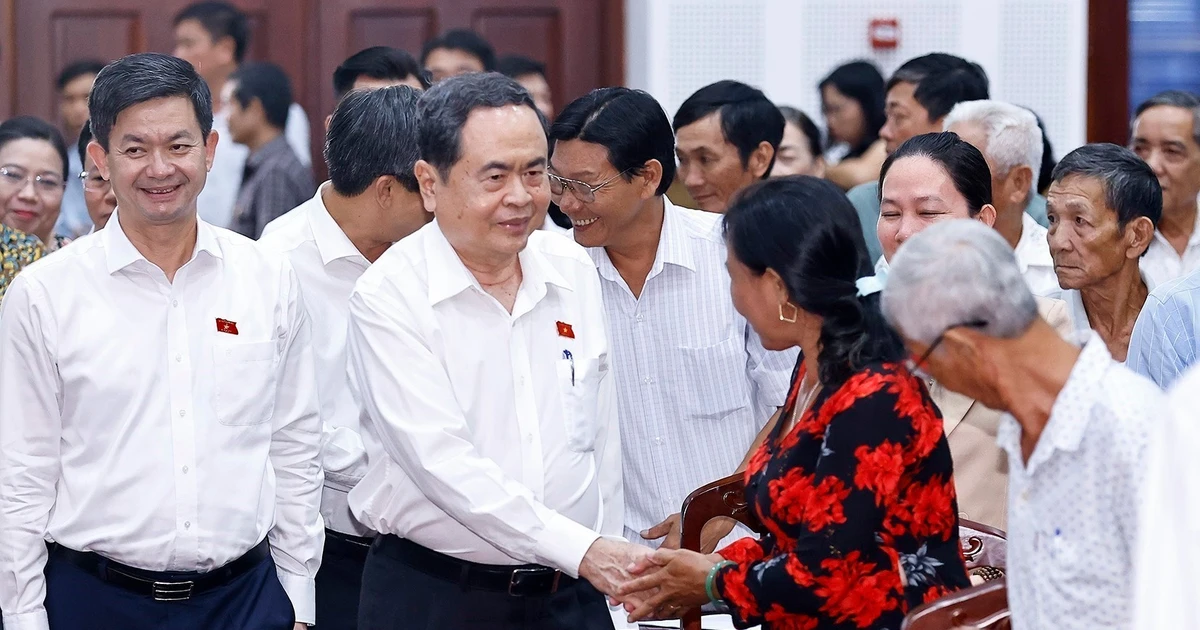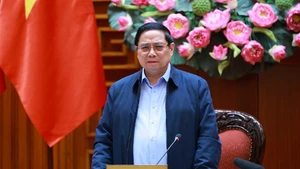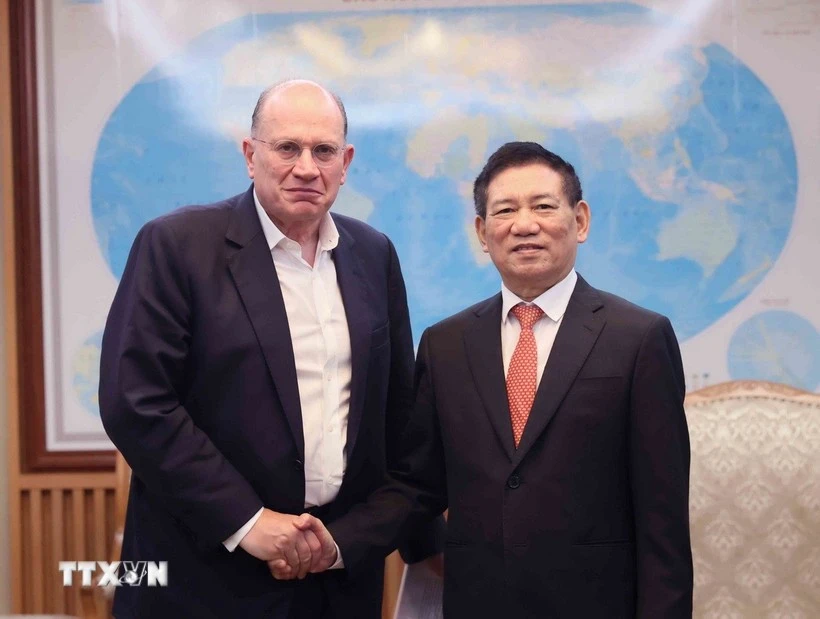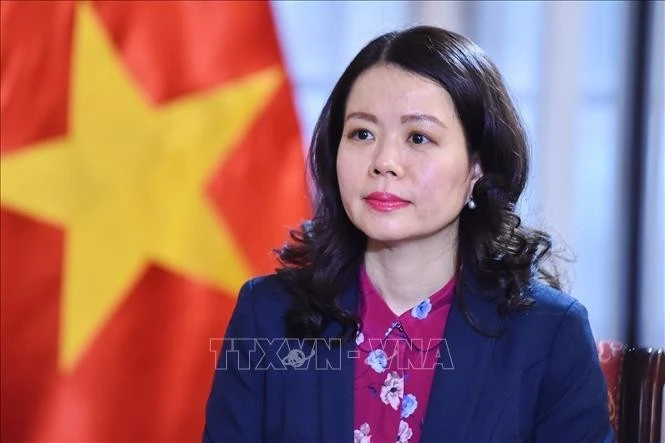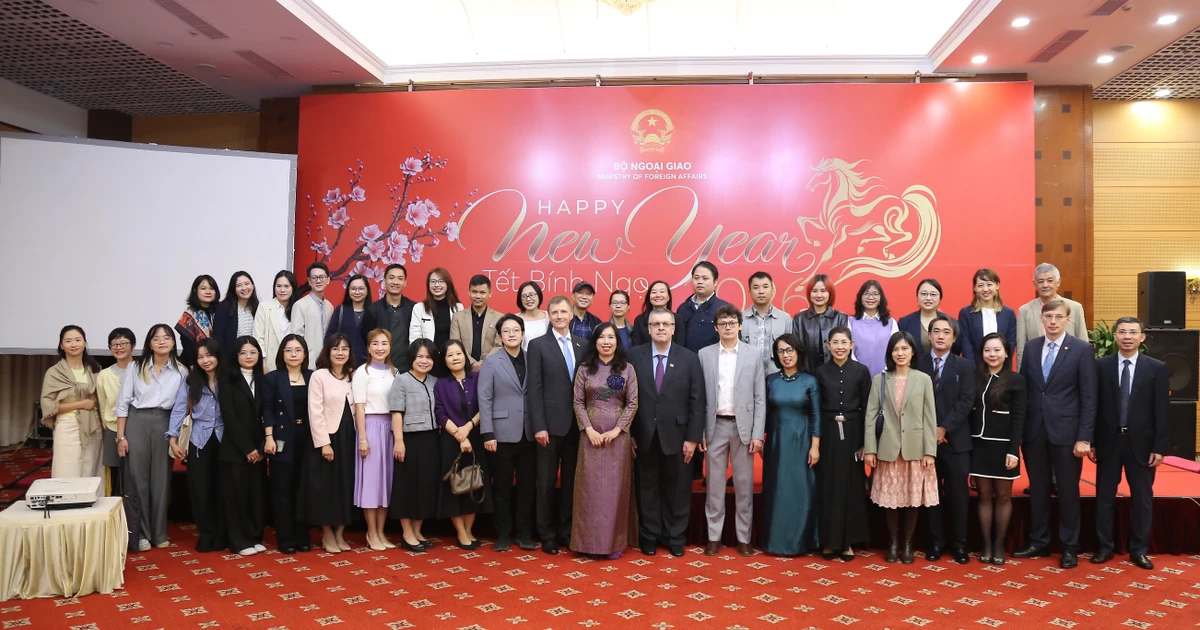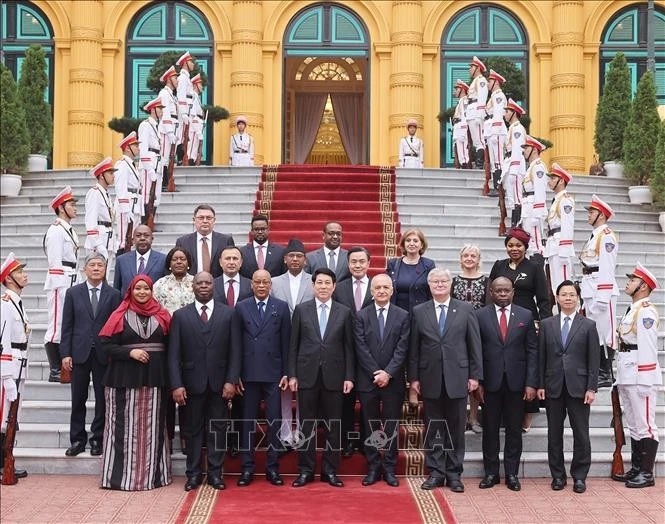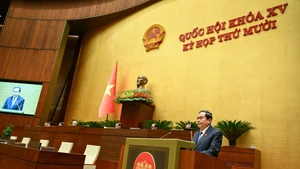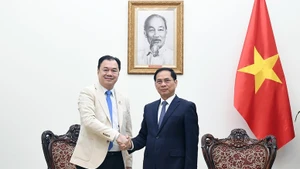PRINTING HOUSE INSIDE THE MOUNTAIN
Journalist Cave was once a secret base of Nhan Dan Newspaper during the resistance war against the US (1967–1972). After more than an hour's drive from Hanoi, visitors can arrive at Phuong Hoang Golf Course, in which there is towering limestone mountain. Approaching the foot of the mountain, the entrance to a cave gradually emerges. Few would imagine that 58 years ago, this primitive cave was prepared as a secret printing house to ensure the smooth publication of Nhan Dan Newspaper, even as the US escalated its bombardment of northern Vietnam.
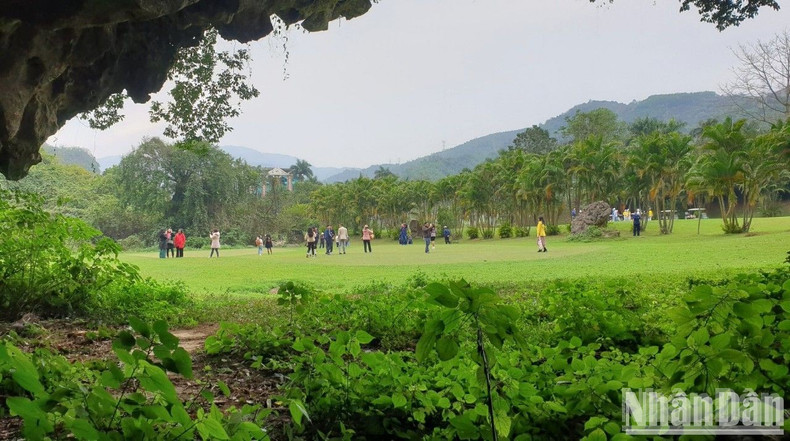 |
| The Journalist Cave is located at the foot of a limestone mountain. In front of the cave entrance, today lies a lush green meadow. (Photo: THU TRANG) |
More than half a century has passed. Among the former staff of Nhan Dan Newspaper, some are still alive and some are dead. Doan Kim Khuc, former Head of the Organisation and Personnel Department of Nhan Dan Newspaper, was one of three members of the newspaper’s Information Team tasked with preparing for the evacuation of Nhan Dan’s editorial office from 71 Hang Trong Street to this secret base.
"At that time, the cave entrance was covered by a dense forest, with two small streams nearby. The evacuation site had to be deep in the forest for secrecy, making transportation and living conditions difficult and even causing dangers", Kim Khuc recalled.
The cave is located in a forested area of Luong Son District, which is about 4 kilometres from National Highway 6. No one knows exactly when it was first called the Journalist Cave, but according to the locals, the name has existed for a long time. It was also codenamed A2.
Although it never officially served as a printing site for Nhan Dan Newspaper, it was a backup location for the Party newspaper during the fight against the destructive war of US imperialism in the North (1965–1972).
Chairman of Lam Son Communal People's Committee Dinh Thai Ngoc remembered that when the investor of the Phuong Hoang Golf Course was levelling the ground for construction, the commune’s authorities asked them not to obturate the entrance to the Journalist Cave or build any works inside or in front of it, as it was a historical site of Nhan Dan Newspaper. The investor agreed to the request, and today, the Journalist Cave remains intact as it was before.
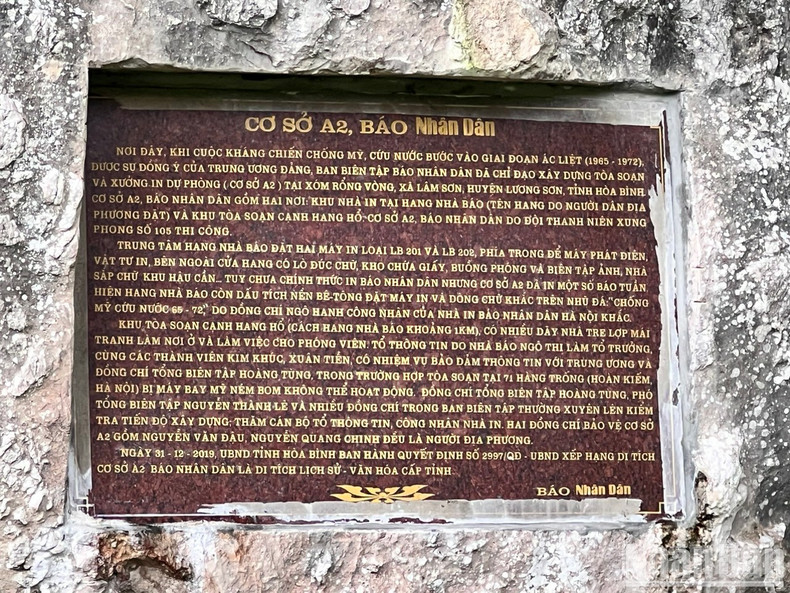 |
| A plaque reading “Base A2, Nhan Dan Newspaper” outside the entrance of the Journalist Cave |
According to eyewitnesses, in July 1967, Youth Volunteer Team 105, which was then operating in Mai Chau District of Hoa Binh Province, received orders to march to a secret location to build roads and set up camps. It was only later that they knew that this site was a contingency base for Nhan Dan Newspaper, prepared in case of escalating war.
This backup area included the Journalist Cave serving as a printing house and an editorial office located next to Tiger Cave, which was about 1 kilometre to the left of the Journalist Cave along the limestone mountain range. During the construction of the camp and the installation of printing equipment, Nhan Dan's then Editor-in-Chief Hoang Tung visited the site twice.
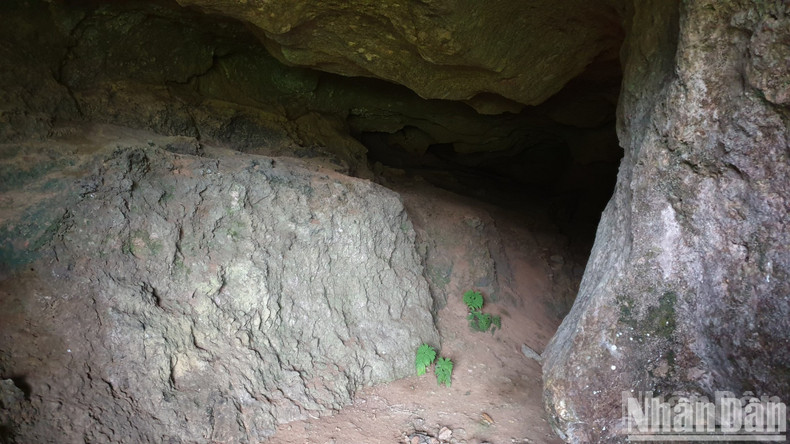 |
| Inside the Journalist Cave (Photo: THU TRANG) |
Recalling the moving of the two printing machines, each weighing over 10 tonnes, former manager of the printing workshop at Nhan Dan Newspaper Printing House in Hanoi Nguyen Dinh Dac said that at that time, there were no cranes or lifting machines, but only a single pulley and manpower. However, thanks to the determination and efforts of the workers, the machines were dismantled and transported to the Journalist Cave within 10 days. Then, after one month, he and his colleagues successfully installed the two printing machines inside, ensuring they were ready for operation in case the Hanoi printing house was compromised.
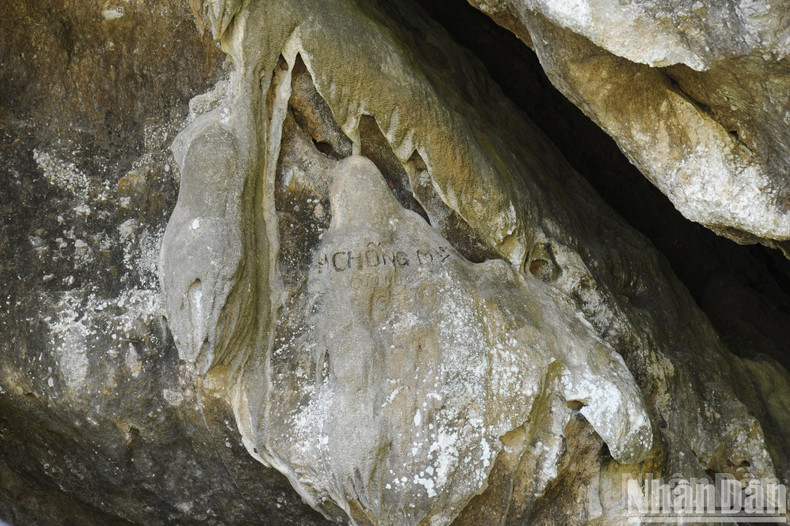 |
| The inscription reading "Fighting against the American Invasion to save the country (1965-1972)" was carved by worker Ngo Hanh in the Journalist Cave in 1972. (Photo: TRAN HAI) |
An inscription, which was carved into a stalactite inside the cave, reads: “Fighting against the American invasion to save the country (1965-1972)”. According to Nguyen Van Dau, one of the four security guards at this secret backup site, this inscription was carved by a worker from Nhan Dan Printing House named Ngo Hanh.
Approximately 1 kilometre from the Journalist Cave was Tiger Cave, which served as the editorial office. It consisted of many rows of bamboo houses with thatched roofs that were living and working spaces for reporters and printing staff.
UNFORGETTABLE DAYS
In memory of the former Head of the Organisation and Personnel Department, although the newspaper never had to evacuate to its secret base, the period of preparations for emergency publishing remains unforgettable.
Kim Khuc said that she and her colleague Nguyen Xuan Tien were the first two telegraph operators when the Information Team under the Secretariat-Editorial Department was established, led by journalist Ngo Thi. The team’s mission was to maintain communication by radio between the Party Central Committee and the Editorial Board in case the US bombing of Hanoi forced the agency to operate at the evacuation site.
While the editorial office had not yet been relocated, the Information Team was responsible for setting up and testing the radio communication system between the evacuation site and Hanoi. To ensure smooth operations, team members took turns staying in Hanoi and at the evacuation site to maintain the connection and test the equipment.
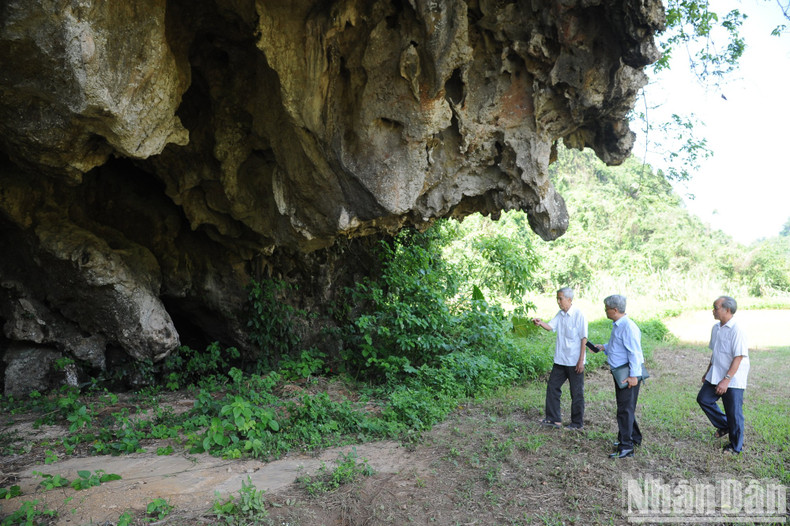 |
| Journalist Ha Hong (centre), son of journalist Ngo Thi, along with two witnesses, Nguyen Quang Chinh (left) and Nguyen Dau (right), inside the Journalist Cave during a Nhan Dan Newspaper delegation’s visit in 2018. (Photo: TRAN HAI) |
The first mission of the Information Team was conducted in December 1967. Khuc said: "In Hanoi, Ngo Thi received the call, while Tien and I followed the schedule to send messages back. We took turns, one cranking the generator, while the other operated the manipulator."
The job seemed simple—just catching the signal and exchanging greetings—but maintaining strict timing was crucial to ensure uninterrupted communication.
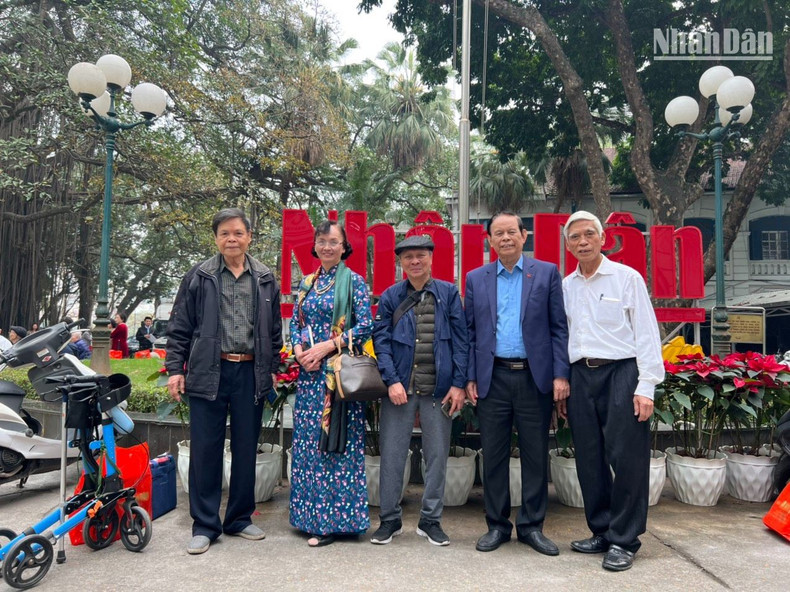 |
| Doan Kim Khuc, former Head of the Organisation and Personnel Department, posed for a photo with veteran journalists of Nhan Dan on the occasion of the 72nd anniversary of the newspaper's first issue in 2023. |
In his shared memories before passing, Xuan Tien remembered the period full of hardships: “The first mission lasted for several months, then both the machine and the people returned to Hanoi. As the war intensified, we had to move back and forth multiple times. It was extremely cold at the evacuation site. There were many snakes and centipedes, and sometimes we faced food shortages”.
During the 12-day-and-night battle against B-52 strategic bombers of the US in Hanoi in 1972, a large part of the editorial staff relocated to the evacuation site. In the remote and freezing mountains in the winter of 1972, all of them were anxious and worried about their families in Hanoi and the city’s armed forces fighting, especially after the US Air Force bombed Kham Thien Street.
Despite the hardships and dangers, all staff of the printing house and editorial office remained in a constant state of readiness to receive orders to print the newspapers, ensuring that the flow of information was never interrupted during the US bombing campaign.
Fifty-eight years have passed, yet recalling those days of evacuation, Kim Khuc spoke with deep emotion: "The memories of that time still stay with us. It was a period full of hardships, yet filled with joy and comradeship. That experience gave us the resilience to overcome any future difficulties without feeling discouraged towards working better and making more contributions".
